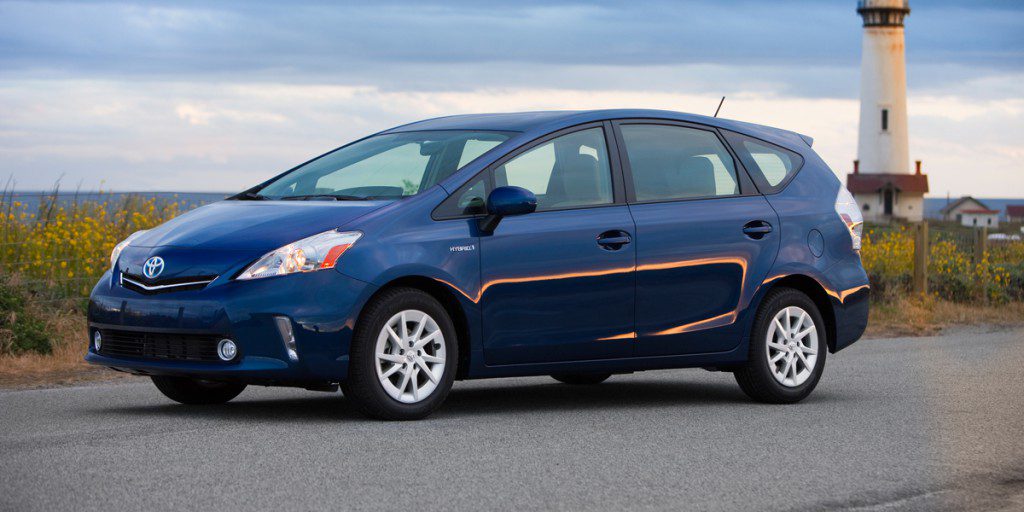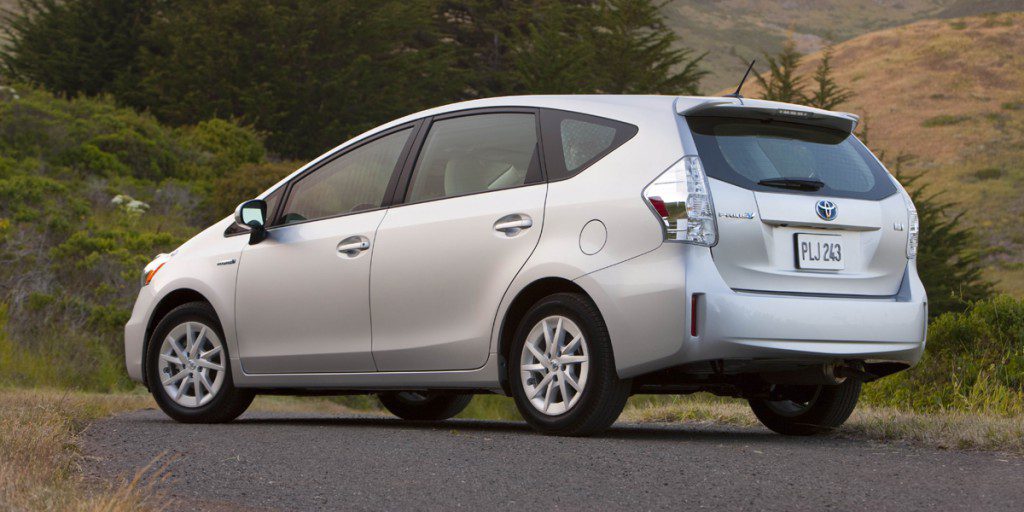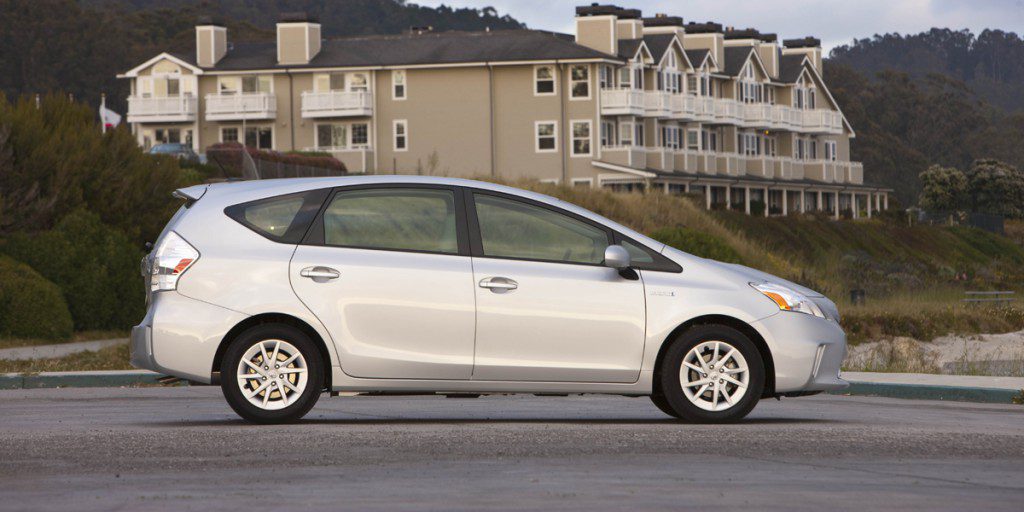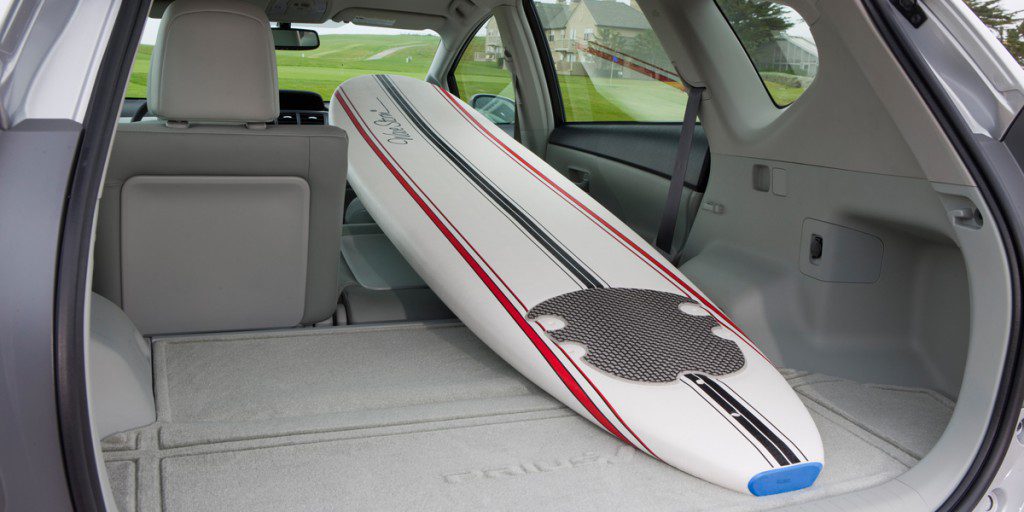| Midsize car; Built in Japan |
|
|
| Good condition price range: $10,000 – $20,700* |

2012 Toyota Prius v

2012 Toyota Prius v

2012 Toyota Prius v

2012 Toyota Prius v
| Pros: |
|
| Cons: |
|
Though Prius v gives up some fuel economy compared to the original Prius, its excellent packaging makes it an arguably more attractive option for families and active folks looking for better gas mileage than most any midsize car or SUV can deliver. This is a practical, roomy wagon that can easily achieve 40 mpg and be bought with most every feature you could want. New or used, Prius v is one of the best values on the market today.
Overview
The 2012 Toyota Prius v was a wagon version of the regular Prius hatchback that was 3 inches longer in wheelbase and 5 inches longer overall. As such, it offered more cargo room and better cargo versatility due to its boxier load area. On the down side, fuel economy was lower due to a bit of added weight and poorer aerodynamics. Rivals included the Chevrolet Volt and Volkswagen Jetta TDI Sportwagen.
Prius v was sold in three trim levels labeled Two, Three, and Five. (Yes, it skipped “Four.”) The Two was very well equipped, and included automatic climate control, tilt/telescopic steering wheel, cruise control, height-adjustable driver seat, fold-flat front passenger seat, split folding rear seat, heated mirrors, power mirrors/windows/locks with remote entry, keyless access and starting, digital-media player connection, USB port, wireless cell-phone link, and rearview camera.
Three added a navigation system and satellite radio. Five additions primarily were limited to heated front seats and vinyl (vs. cloth) upholstery. Options for the Five included a pre-collision system, hands-free parallel parking system, adaptive cruise control, sunroof, and Toyota’s Safety Connect assistance system and Entune infotainment system.
Prius v came with the same 98-horsepower 1.8-liter gasoline 4-cylinder engine and 36-horsepower battery-powered electric motor as the regular Prius. Likewise, it also was equipped with the same continuously variable transmission (CVT) that behaved much like an automatic, and it was front-wheel drive.
The EPA rated the 2013 Prius v at 44 city/40 highway. By contrast, the regular Prius netted a 51/48 rating, so you sacrificed quite a bit of fuel economy for the added cargo space. The Prius v used regular-grade gas.
Yearly Updates
| 2013 Prius v Changes for 2013 were limited to a new color and a slightly different steering wheel texture for the top-line trim. |
| 2014 Prius v For 2014, changes for the Prius v were again modest. Daytime running lights were new, and a panoramic moonroof was now an individual option for the mid-grade Three trim level. |
| 2015 Prius v The Toyota Prius v was cosmetically freshened for 2015 via a new front fascia and new taillights. An 8-way power driver’s seat was newly available, as were LED projector-beam headlights. Toyota’s Entune multimedia system had been upgraded as well. |
